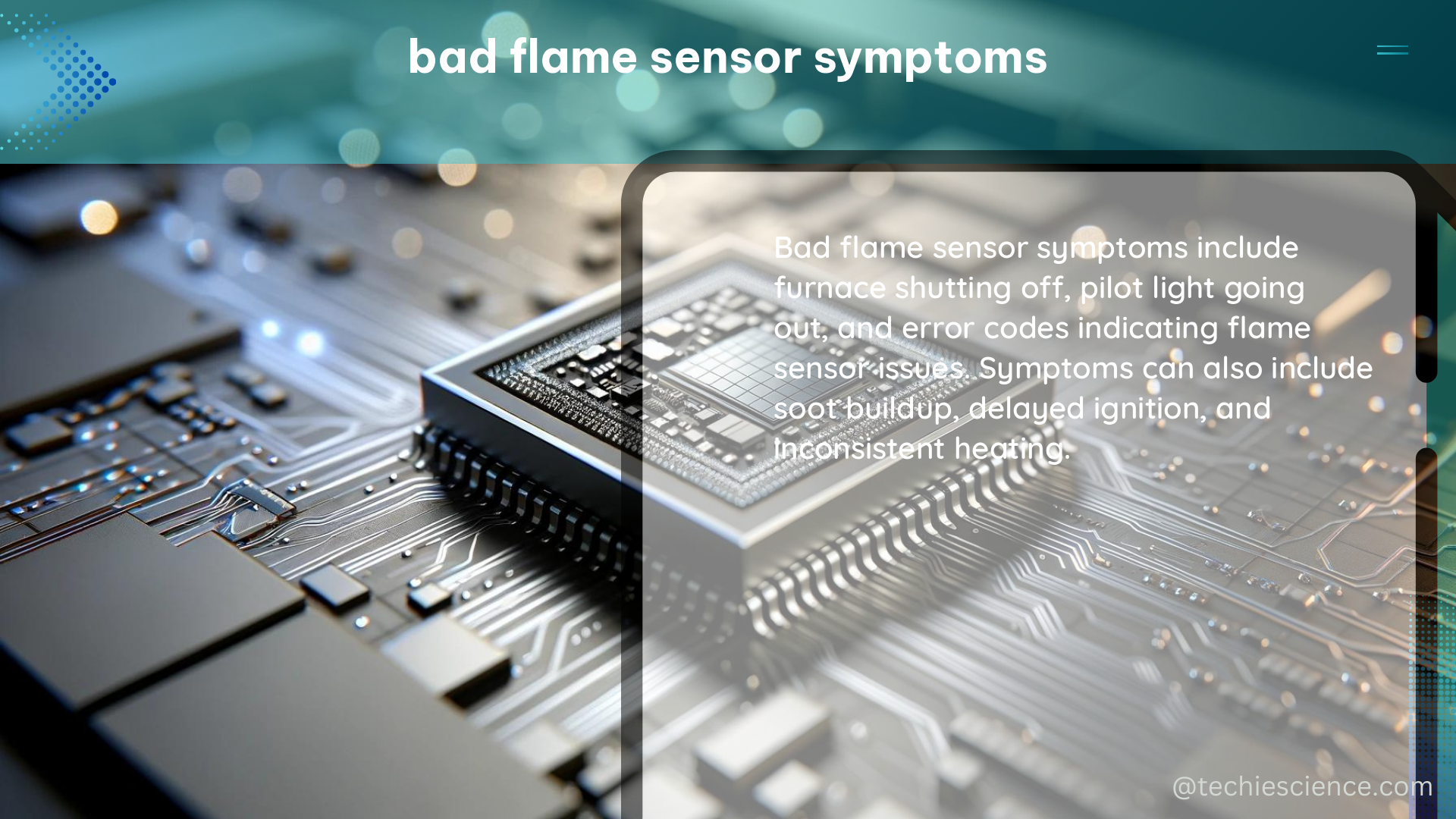A malfunctioning flame sensor in a gas furnace can lead to a range of issues, from inefficient heating to potentially dangerous gas leaks. Understanding the various symptoms of a bad flame sensor is crucial for homeowners to ensure the safe and reliable operation of their heating systems. This comprehensive guide delves into the measurable, quantifiable data points that can help identify and address bad flame sensor symptoms.
Flue Line Corrosion
One of the primary indicators of a bad flame sensor is the presence of rust or corrosion in the flue line, which is responsible for venting harmful gases from the furnace to the outside. This corrosion typically indicates a leak in the flue line, resulting in inefficient carbon monoxide venting. When the flame sensor detects this issue, it may shut down the heating system as a safety precaution to prevent further damage.
High Energy Bills

Flame sensors have an average lifespan of around 20 years. As the sensor approaches the end of its useful life, it can start to malfunction due to natural wear and tear. This can lead to fluctuations in energy bills, as the furnace struggles to maintain efficient operation. Monitoring your energy costs can be a valuable indicator of potential flame sensor issues.
Yellow Flames
Observing the color of the flames in your gas furnace’s burner assembly can provide valuable insights into the performance of the flame sensor. If the flames appear yellow, it suggests that the gas is not being fully burned, likely due to inefficient carbon monoxide venting. This is a clear sign that the flame sensor may need inspection or replacement by a certified HVAC technician.
Furnace Short Cycling
When a furnace starts up but then shuts off within a few seconds, it is known as short cycling. This is a common symptom of a malfunctioning flame sensor. The sensor may incorrectly detect the absence of a flame, causing it to shut off the gas supply as a safety measure. However, with a flame present, the lack of gas supply leads to the flame’s extinguishment, perpetuating the short cycling cycle.
Dirt or Corrosion on the Sensor
The flame sensor should be free of visible dirt or corrosion. If the sensor is not properly maintained through regular furnace servicing, these issues can develop, compromising the sensor’s ability to accurately detect the presence of a flame. Technicians typically clean the sensor during annual maintenance checks to ensure optimal performance.
Cracked Flame Sensor
The flame sensor’s outer casing is made of porcelain, which can sometimes develop cracks due to damage or other factors. These cracks can prevent the sensor from accurately assessing the temperature, potentially leading to gas leaks. The sensor may incorrectly detect a flame when there is none, leaving the gas line open and creating a dangerous situation.
To locate the flame sensor in your furnace, it is typically situated near the bottom, within the burner assembly. Before attempting to inspect or clean the sensor, ensure that the furnace is turned off and the gas supply is shut off. Handling the flame sensor requires caution, as it controls the gas flow and is a critical safety feature.
While you can use fine-grit sandpaper to gently remove soot and debris from the metal rod of the flame sensor, it is generally recommended to have a professional HVAC technician handle any suspected issues. Attempting to clean or repair a broken flame sensor yourself can potentially lead to gas leaks or other hazardous situations. It is always best to have a qualified technician assess and address any concerns related to the flame sensor.
Reference:
- 6 Signs That the Flame Sensor in Your Furnace Has Gone Bad
- What could cause a flame sensor to stop working so frequently?
- 3 Symptoms of a Bad Flame Sensor & What to Do
- Bad Flame Sensor on Furnace
- Checking micro amps on flame sensor

The lambdageeks.com Core SME Team is a group of experienced subject matter experts from diverse scientific and technical fields including Physics, Chemistry, Technology,Electronics & Electrical Engineering, Automotive, Mechanical Engineering. Our team collaborates to create high-quality, well-researched articles on a wide range of science and technology topics for the lambdageeks.com website.
All Our Senior SME are having more than 7 Years of experience in the respective fields . They are either Working Industry Professionals or assocaited With different Universities. Refer Our Authors Page to get to know About our Core SMEs.